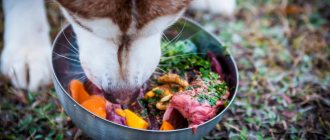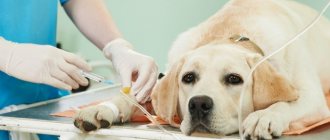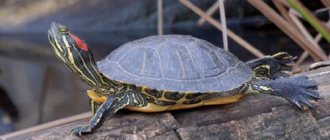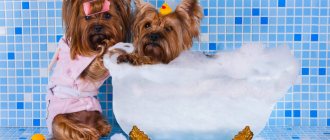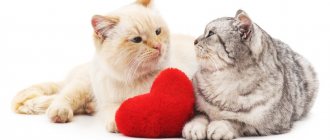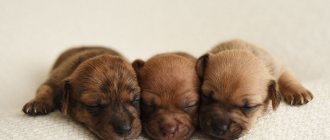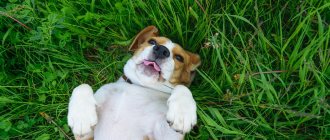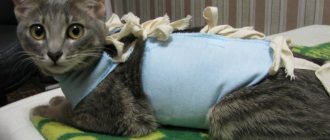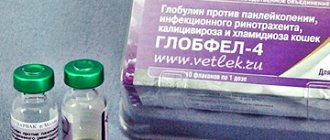The health of your pet depends on compliance with hygiene rules. Control over this aspect of the life of four-legged friends falls on the shoulders of the owners. Despite the fact that animals carry out many grooming procedures independently, in a number of situations they need help. This is especially true for cleaning limbs. Read on to learn how to wash your dog’s paws after a walk and what devices have been developed for this.
How to wash your dog's paws after a walk?
What hides in the street dirt
Dog paws harbor far more germs than car tires or dirty shoes. According to statistics, their number reaches 420,000.
Ominous statistics:
- 27% of bacteria are considered deadly, such as the E. coli virus.
- 96% of outdoor microbes are found in animal and human feces.
- 99% continue to remain active at home.
Street dirt is teeming with thousands of harmful microorganisms
By ignoring basic hygiene rules, there is a risk of infection by pathogenic bacteria.
Table 1. Main categories of harmful organisms
| Variety | Characteristic |
| Intestinal infections | Excrement is a fertile environment for the active proliferation of microbes, including E. coli. Once caught on the paws, they remain viable for several months. |
| Toxic substances | Toxins found in the environment, such as fertilizers or chemical-soaked puddles, can settle on animals' skin. We should not forget about the possibility of developing cancerous tumors under the influence of these elements. |
Fluid regularly accumulates in the folds of the skin of the paws and under the pads. It provides a nutrient medium that promotes the development of the Proteus bacterium. Active reproduction of this microorganism provokes the appearance of a specific odor reminiscent of the aroma of popcorn.
Paws should be washed regardless of how dirty your pet is.
Hold dogs by the paws more often to get used to being touched.
Most dogs cannot tolerate anyone touching their limbs. The pet growls, withdraws its paws, snarls and with its entire appearance demonstrates fear or strong dissatisfaction to the owner.
Meanwhile, it is absolutely necessary to accustom him to such touches. And the point is not only that there is no other way to carry out hygiene procedures, but also that after returning from the street, the animal’s paws must be carefully examined. After all, during a walk, the pet could cut a pad, break a claw or splinter its paw.
In addition, on the street the pet could walk on spilled fuel oil, resin or fresh oil paint. If traces of these contaminants are not removed in time, the dog may begin to lick its paws, and this can lead to serious poisoning.
This is why it is important to start teaching your puppy to have his limbs touched as early as possible. To do this, from the very first day the baby appears in the house, from time to time touch his paws and gently stroke them. This should be done in a playful way, without in any way scaring the pet or causing him discomfort.
When the baby gets used to his owners touching his paws, you will need to accustom the puppy to the fact that you will not just touch his limbs, but also hold them for a while, and then wipe them with a towel.
A good solution would be to teach the command “Give me your paw!”
It is not included in the mandatory training course, but it makes the life of the owner and his pet much easier. After all, a dog trained for it calmly allows the owner to touch its paws and hold them during the necessary procedures, including when washing them.
The first time should not be long for the dog to experience positive emotions. It is very important that the pet does not associate the process of washing its paws with discomfort or, even more so, causing him pain.
You should not carry out this procedure for too long the first time. It is enough to rinse the animal’s paws with warm, but not hot water and immediately dry them with a soft towel. In this case, you need to talk kindly to your pet in order to divert his attention from unusual sensations and the sound of pouring water, which can frighten him.
Later, the procedure time will need to be gradually increased, making sure that the process does not drag on too long and is pleasant for the animal.
After washing your puppy's paws for the first time, be sure to praise the baby and treat him with a treat.
This will reinforce the pet’s positive emotions and convince him that there is nothing wrong with washing his paws and that after this procedure the owner will praise him and may even treat him with treats.
Rules for washing limbs
Many owners wash their four-legged pets' paws only after a walk in rainy weather. This approach to hygiene is wrong. Dogs' limbs get dirty during every walk, even if visually there are no obvious signs of contamination. In addition, on the street the animal faces many dangers, namely:
- injury to pads from broken glass;
- contact with gasoline or fuel oil on the skin surface;
- formation of splinters;
- harmful effects of reagents used to combat snow.
First aid for cut paws
These factors contribute to the development of inflammatory processes in the paw pads, the occurrence of dermatitis and allergic reactions. To prevent the formation of such pathologies, it is necessary to treat the pet’s limbs at the end of each walk.
Wounds on the paws are one of the possible consequences of walking around the city
General washing tips:
- Before each procedure, the pads should be inspected for cracks, wounds, or foreign objects. Since paw injuries are not always accompanied by lameness, visual inspection should be carried out scrupulously. If an animal with a damaged limb has been playing outside for a long time, being in a state of emotional arousal, it may not respond to skin damage.
- After a walk in dry weather, you can limit yourself to wiping your paws with a damp cloth.
- If there is slush outside, limbs must be washed with water and detergent.
- You can carry out such a manipulation in the bathroom or use a basin of water left in advance at the doorstep of the apartment. The choice of method depends on the size of the pet
- At the end of the procedure, you need to wipe your pet's paws with a cloth.
As an alternative to dog shampoos, you can use tar soap.
- When cleaning paws, it is appropriate to use a special shampoo for dogs.
- You should make sure that your pet does not jump out of the bath wet. This is fraught with broken limbs.
- The procedure will be greatly facilitated by the use of a special brush, which can easily remove stuck tree buds and sand. To avoid water getting on clothes, the device should be directed towards the bottom of the bath.
- During the cold season, it is not advisable to wash your limbs with hot water. Cool or cold is suitable. A sharp change in temperature negatively affects the condition of the epidermis.
- After a visit to the veterinary clinic, it is necessary to treat the paws with a disinfectant.
- If your pet has walked through an area contaminated with gasoline, its limbs should be washed with a special cleaning gel for motorists.
By following these simple instructions, you can protect your animal from the development of many diseases and keep your home clean.
When wiping extremities, it is preferable to use microfiber-based cloths
Why do you need to wash your dog's paws after every walk?
Many owners wash their dogs' paws only in spring and autumn, when there is dirt outside, so that the pet does not disturb the cleanliness of the apartment. But there are several reasons that make this procedure necessary at any time of the year:
1. While walking, the dog may step into a puddle of gasoline or other toxic substance. If their traces are not washed off their paws in time, the pet may become poisoned. While walking, the dog may step into a puddle of gasoline or other toxic substance. If their traces are not washed off their paws in time, the pet may be poisoned.
2. In winter, the reagents used to sprinkle roads can cause allergies and irritation in the dog.
3. If your dog cuts his paw pads or gets a splinter, you can determine how damaged the skin is by washing it.
4. An animal on its paws can bring ticks and infections into the house, which are dangerous not only for itself, but also for all household members.
We think this is already enough to pay attention to the hygiene of your pet’s paws after every walk.
Rules for washing paws for large dogs
It is easiest to clean the limbs of small animals. You can easily carry them in your hands to the bathroom and wash them. With representatives of large breeds the situation is more complicated.
Rules for removing dirt from paws:
- Before walking, place a container of warm water and a rag near the front door. It is advisable to use fabric that absorbs moisture well.
- Pre-spread a waterproof mat for water procedures.
- Depending on the volume of the pelvis and the size of the pet, one limb or 4 at the same time are dipped into the water.
- After washing, dry your paws with a rag or towel.
- If your pet is not a fan of water treatments, experienced dog lovers recommend using a paw wash. With this device you can avoid splashing water around the room. However, this device does not always cope with heavily soiled paws.
A paw wash is a great helper for cleaning limbs.
In a private home, it is advisable to install a special design for washing paws, making it easier for the owner to carry out hygiene procedures.
Shoes for dogs will help reduce the degree of contamination of the limbs. Special galoshes will protect the animal from the harmful effects of reagents, fuel oil, glass and snow. However, not all pets react enthusiastically to such an innovation. In addition, some models harden from frost.
Mini-bathroom for washing four-legged friends
Recently, waterproof rubber socks have appeared on the market. They are considered a more comfortable alternative to dog shoes because they allow your pet to feel contact with the ground. In such sensitive clothing, the dog loses the desire to pull off its protective socks.
Shoes for dogs - a stylish accessory to protect against paw injury
How to wash your dog's paws without problems
Owners of small dogs wash their paws under the tap or in the bathroom after a walk. The paws of large pets are washed in a basin. In order for your dog to approach the procedure without fear, you need to follow a few simple rules:
- The water should not be hot. After a winter walk, you generally need to use only cool water to wash your dog’s paws so that the animal does not get sick due to a sharp temperature change.
- You need to wash with a sponge, which foams the shampoo well and allows you to use less detergent.
- You need to start with the front paws. After washing, they are placed on the floor on a previously laid towel. If the fur on the belly is also dirty, it is better to wash your pet in the bathroom, where you can thoroughly rinse off the shampoo. If this is not possible, wipe the stomach with a damp cloth.
- After each pet returns from a walk, you need to check if there are any cuts or splinters on its paws. To remove the latter you need to use tweezers.
- Washed paws are blotted with a microfiber towel, which absorbs water well. These towels need to be washed regularly.
You may be interested in the following products:
| Kiltix collar for small dogs (35cm) | Collar “Rolf Club” 3D for dogs of medium size 65 cm | Collar “Rolf Club” 3D for large breed dogs 75 cm |
Overview of paw washers
Manufacturers produce this innovative product in many variants. Depending on the size of the pet, the following models are available:
- small - for little ones;
- medium - for average;
- large - for large ones.
Thanks to the paw washer, the process of washing limbs is greatly facilitated, and the floor in the house remains free of dirt and splashes.
Paw wash - a universal means for washing limbs
Operating principle of the device:
- Pour water and shampoo into a mug.
- Place the paw in the device and move it with gentle movements up and down.
- At the end of the procedure, wipe the animal’s limbs.
According to reviews from dog lovers, one of the advantages of this device is the absence of splashes after removing the pet’s paw from it.
Table 2. Overview of paw washers
| Variety | Characteristics |
Paw Plunger | Available in several variants. For animals weighing up to 10 kg, a small paw washer has been developed, from 10 to 30 kg - a small one, from 30 kg or more - a large one. The location of the brushes allows you to reach the most difficult to reach areas on the paw. The brushes are made of material that is gentle on skin surfaces. |
Paw Wash | Made in the shape of an elongated vase. At the top there is a rubber nozzle that prevents injury to the animal’s limbs. This model does not have a brush. The device is intended for all categories of dogs. The mechanism of action is simple: you should lower the dog’s limb into a vase, into which you have previously poured water and shampoo, and rinse it thoroughly. This device comes with a comfortable glove that can be used to remove moisture from your paws. |
Dirty Paws Footbath | This small device is a glass made of plastic. Its soft upper part does not damage the limbs during the procedure. The operating principle is similar to Paw Wash. The device comes with a dog towel made of microfiber. |
Paw Boss | Complicated option. In appearance it resembles a container with compartments. After adding detergent and water to the device, the animal's paws are cleaned with a bristle plate. The design includes a lever that turns the paw washer. Thanks to the features of this device, there is no need to change the water before washing another limb. |
Paw Cleaner | A popular, inexpensive system for cleaning moderately soiled paws, pet peritoneum and upholstered furniture. The device is based on a special brush for cleaning limbs and a microfiber nozzle for wiping them. Available in several sizes. |
Paw Plunger is considered the most popular type of paw plunger
Advantages and disadvantages of paw washers
This device has already won the hearts of many dog lovers. The American invention is successfully developing the Russian market, delighting customers with a variety of models.
Among the advantages, dog lovers note the following:
- compactness and light weight;
- the ability to take the device on the road;
- no need to transport the pet to the bathroom;
- clean floor during the procedure;
- compliance of product dimensions with the dimensions of the animal;
- ease of use;
- affordable price.
Compared to the advantages, the disadvantages of the paw wash were much smaller. Owners note that the device is not suitable for very small animals. In addition, not all pets respond adequately to this device.
Paw washers are easy to use
Frequently asked questions regarding the use of Paw Plunger
Since this device recently entered the Russian market, pet owners often have questions regarding the use of the device.
Table 3. Frequently asked questions
| Question | Answer |
| Is the device dishwasher safe? | The paw washer can be washed in the dishwasher, but not often. If the device is used daily, it is preferable to rinse it with cold water. |
| What is the purpose of the rubber layer at the top? | It prevents water from splashing out of the device. |
| How airtight is the lid? | The lid fits tightly to the device and prevents water from escaping from it. It is not advisable to store liquid inside the paw washer, since over time harmful bacteria begin to actively multiply in it. Clean water is required for each procedure. |
| What is the recommended water temperature? | This indicator depends on the weather. In hot weather, the water should be cool; in cold weather, it should be at room temperature. |
| How much water should be poured into the device? | To the level of the upper bristles. |
It is necessary to instill a love of hygiene procedures from an early age
Paw washers: washing your dog’s paws quickly and easily
Paw washers are a new product on the market of hygiene products for dogs. They operate simply: put the paw into a special container, where brushes carefully clean it without any splashes. The procedure lasts several minutes and can be done using shampoos. Manufacturers offer paw washers of different sizes for dogs of various sizes. After completing the procedure, the paws must be dried. According to reviews from some owners of dogs, especially long-haired ones, after washing in a paw washer, dirt remains between the pads. However, given the affordable price of this hygiene accessory, it makes sense to try it out. If you teach your pet to use the paw wash, it will make your life much easier.
How to train a dog to wash its paws
In addition to training the animal, it is imperative that your pet is taught to wash its paws from an early age. Upon arrival home, you need to give the animal the command “Sit” and wet its limbs in a previously placed basin of water or using a paw wash. For pocket dogs, it is preferable to use the bathroom.
Over time, the animal will get used to this manipulation. When trying to escape, you should not scold your pet. To speed up the adaptation process, it is advisable to reward your four-legged friend with your favorite treat.
How to teach a dog to wipe its paws?
In principle, it is possible to teach a dog to imitate wiping its paws, but only if it has the ability to do so. Some dogs (but not all!) begin to scrape both their front and back paws on the ground after urinating or defecating. It is believed that this is a legacy of the dogs' wolf past. The fact is that wolves, as territorial animals, fence their territory with scent marks (urine drops and feces). Shuffling with paws helps scatter soil with particles of urine and feces and thereby makes the scent mark more expressive. Some ethologists believe that scratches have meaning in themselves, as marks. The fact is that wolves and dogs sweat with their paws; by scraping the ground, they leave marks on it and scatter particles of earth with the smell of their sweat.
So, if you have a dog in which several wolf genes have gotten lost, then you can teach it to shuffle its paws.
To do this, carefully observe the dog for several days. It is necessary to identify behavioral signs that precede scratching. This is extremely important for using the method of selection of behavior or catching, as the great trainer V. Durov called this method.
After this, you can begin to shape behavior.
While walking, noticing the act of urination or defecation, as soon as you notice a behavioral sign that precedes scratching, immediately repeat the command, for example: “Wipe your paws!” Repeat several times until scratching, and after the dog has shuffled its paws, give it something tasty. Something she loves very much. And, of course, without sparing your emotions, praise her.
Subscribe to our newsletter and get a free veterinary consultation
Thanks for subscribing!
After 5-10 such catches, check whether a connection has been formed: give the command without waiting for urination or defecation. If the dog “wipes” its paws, praise it very expressively and emotionally. If not, keep fishing. And be optimistic.
Reinforce, especially at the beginning, any shuffling-like paw movements. And of course, demand more similarities over time. And with the first similar movements, move to the mat. There should be only one rug.
The speed of learning is determined by two factors: the dog's intelligence and your talent for training.
Shuffling —
This is of course a trick. And the dog’s paws need to be really wiped, especially after rain and in the fall. And if the dog does not allow the owner to do this, this is a serious problem.
So your dog won't let you dry his paws. And you really want to fix the situation?
Please note that dog paws —
the most important organ. Remember the saying: the legs feed the wolf? They also feed the dog. And you shouldn’t trust anyone to be the breadwinner. What I mean is that if your dog does not allow you to wipe his paws, then from his point of view you are not much of an owner. Are you offended? Then let's begin.
Stop feeding your dog just like that. Pour the daily dose of food into a bowl and place it high up so that the dog cannot reach it. Call the dog from time to time, and when it comes, touch either paw with your hand and immediately give the dog a food pellet. Touch again and give the pellet again. And so on until the dog has eaten its daily dose of food.
If the dog shows aggression or reluctance, do not insist. Step away from her and take a break. The main thing is not to feed the dog just like that.
Feed your dog this way until he begins to tolerate the touch calmly. After this, proceed to the next step.
In the next step, grab the paw with your hand, immediately release it and give the dog a food pellet. Be persistent and patient; If the dog shows aggression or resists, take a break from feeding.
In the next step, hold the dog's paws longer.
And at the next stage, don’t just hold the paw, but remember it a little with your hand.
And so with each paw. Wrinkled with one hand, crushed with the other. Gradually increase the time of contact with the paw and the intensity of the “kneading”. You can add a few more steps, but finish with a rag.
If your dog shows any resistance or aggression, stop feeding. You must prove to the dog that the only way is to eat and, accordingly, stay alive —
This is a "paw massage". Convince her of this, and there will be no problems. The dog itself will begin to offer you to wipe its paws.
Water too warm for washing
Before washing your paws, you need to set the optimal water temperature. Too cold water will not be able to effectively remove all contaminants, and hot water will be unpleasant for the dog, which can greatly complicate water procedures in the future. The ideal option is to wash your paws in warm water. However, there is still an exception to this rule, which not all dog owners know about: in winter, cool water should be used for hygiene measures after a walk. This precaution is necessary to avoid sudden changes in temperature, which negatively affect the condition of the epidermis of the sensitive paw pads and the well-being of the animal as a whole.
